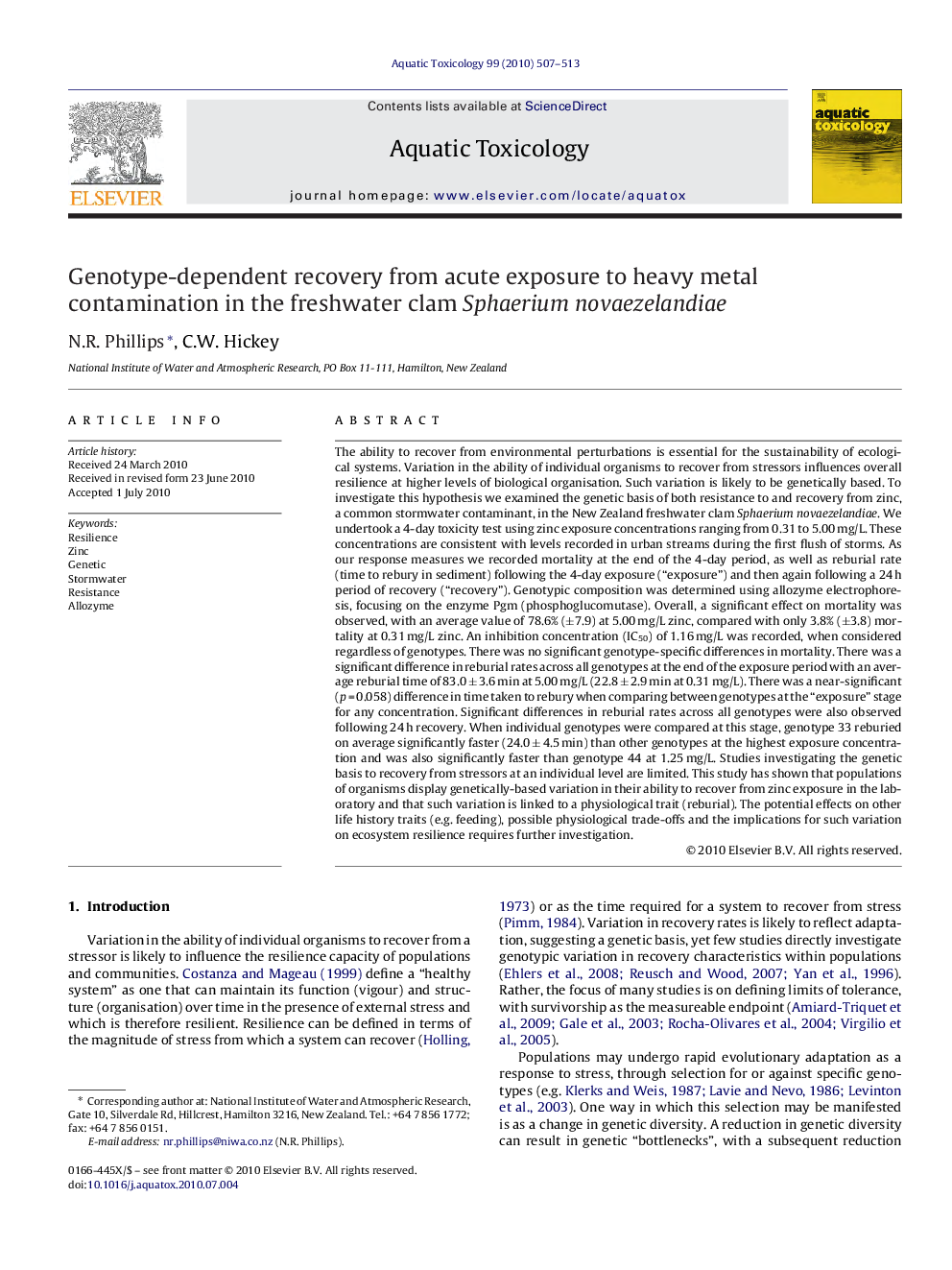| Article ID | Journal | Published Year | Pages | File Type |
|---|---|---|---|---|
| 4530249 | Aquatic Toxicology | 2010 | 7 Pages |
The ability to recover from environmental perturbations is essential for the sustainability of ecological systems. Variation in the ability of individual organisms to recover from stressors influences overall resilience at higher levels of biological organisation. Such variation is likely to be genetically based. To investigate this hypothesis we examined the genetic basis of both resistance to and recovery from zinc, a common stormwater contaminant, in the New Zealand freshwater clam Sphaerium novaezelandiae. We undertook a 4-day toxicity test using zinc exposure concentrations ranging from 0.31 to 5.00 mg/L. These concentrations are consistent with levels recorded in urban streams during the first flush of storms. As our response measures we recorded mortality at the end of the 4-day period, as well as reburial rate (time to rebury in sediment) following the 4-day exposure (“exposure”) and then again following a 24 h period of recovery (“recovery”). Genotypic composition was determined using allozyme electrophoresis, focusing on the enzyme Pgm (phosphoglucomutase). Overall, a significant effect on mortality was observed, with an average value of 78.6% (±7.9) at 5.00 mg/L zinc, compared with only 3.8% (±3.8) mortality at 0.31 mg/L zinc. An inhibition concentration (IC50) of 1.16 mg/L was recorded, when considered regardless of genotypes. There was no significant genotype-specific differences in mortality. There was a significant difference in reburial rates across all genotypes at the end of the exposure period with an average reburial time of 83.0 ± 3.6 min at 5.00 mg/L (22.8 ± 2.9 min at 0.31 mg/L). There was a near-significant (p = 0.058) difference in time taken to rebury when comparing between genotypes at the “exposure” stage for any concentration. Significant differences in reburial rates across all genotypes were also observed following 24 h recovery. When individual genotypes were compared at this stage, genotype 33 reburied on average significantly faster (24.0 ± 4.5 min) than other genotypes at the highest exposure concentration and was also significantly faster than genotype 44 at 1.25 mg/L. Studies investigating the genetic basis to recovery from stressors at an individual level are limited. This study has shown that populations of organisms display genetically-based variation in their ability to recover from zinc exposure in the laboratory and that such variation is linked to a physiological trait (reburial). The potential effects on other life history traits (e.g. feeding), possible physiological trade-offs and the implications for such variation on ecosystem resilience requires further investigation.
